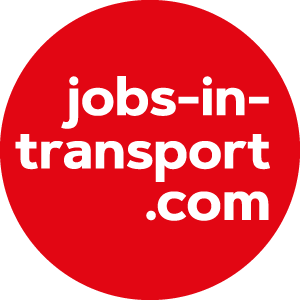
Investment in active travel – walking, cycling and wheeling – enables thriving communities where people want to live, work and socialise. It improves health and wellbeing, contributes to reducing carbon emissions, improves air quality, boosts local economies and can offer personal cost savings.
In 2022, the UK government tasked Active Travel England with making walking, wheeling and cycling the preferred choice for everyone to get around, with an ambition for 50% of short journeys in England’s towns and cities to be walked, wheeled, or cycled by 2030. Scotland is targeting a 20% reduction in car kilometres by 2030, and Wales has a target of 45% of journeys to be made by walking, cycling and public transport by 2040.
These are ambitious targets, and investment is being made across the country in much-needed cycling and walking infrastructure. But infrastructure takes time to plan and build, and we are still some way from reaching those targets . According to the Department for Transport’s National Travel Survey, in 2022, just 13% of adults in England cycled at least once a month .
We need to put people at the heart of active travel policy, planning, design and delivery.
Meeting the ambitious targets will require behaviour change on a bigger scale. To achieve that, we need to do more to understand how every active travel scheme will meet people’s real transport and mobility needs, which journeys are viable for active travel, the constraints that people face, and what support people need. And we need to understand and account for how this varies for different people.
There’s no doubt that good infrastructure is vital to enabling more active travel. But people also need to feel confident about riding, walking or wheeling. To do this, they need to feel they have the right skills and capabilities. This could include cycle maintenance know-how, knowing which cycle is right for them, or knowing how to navigate a tricky junction on a particular journey. Cycle loan schemes, access to subsidised cycle maintenance and cycle training can all increase capability and confidence.
Social factors are also important. It helps if people can identify active travel as something that people like themselves do – for example, that cycling or walking to work or school is a normal behaviour for people like them. Buddy schemes, role models, leveraging social networks, and using relatable messengers in communications can all help.
There may also be mental processes that deter people, such as feeling inhibited by a particular part of a walk or wheeling journey because it doesn’t feel safe, or habits that hinder reflection on the benefits of active travel. Even the most confident cyclist can be deterred if they believe there won’t be a safe place to park their cycle at the end of their journey.
All these things point to the need for a more rounded, people-centred approach to active travel planning and provision. While infrastructure is essential in providing the physical opportunity for active travel, it’s not sufficient on its own to change the behaviour of many people who may also need support in gaining the confidence, capability and desire to walk, wheel or cycle more.
Historically, many active travel schemes have relied on rudimentary behavioural evidence. For example, questionnaires that ask the public if they would use new infrastructure if it were built, which are subject to social desirability bias, with people likely to give the ‘right’ response.
Social and behavioural science arm us with better tools. Personas help us to understand the varied experiences of different people, while user journey mapping enables us to understand their pain and gain points across an entire end-to-end journey. Behavioural frameworks and models, such as UCL’s COM-B, or the Scottish Government’s ISM model, can help us diagnose all the individual, social and contextual barriers to active travel and identify solutions that take account of human behaviour and psychology, including measures to complement and maximise the success of infrastructure schemes. Qualitative research enables us to fully explore people’s hopes, wants, needs and problems, increasing our ability to develop schemes that have public support.
And successful schemes provide much-needed evidence to inform future ones. So, we need to invest in more and better evaluation and make sure that learnings are shared across the sector.
Taking a people-centred approach shouldn’t be a ‘nice-to-have’ or an ‘add-on’ – it needs to form a golden thread through policy and planning, optimising the design of infrastructure, and supporting ongoing behaviour change.
When we see the benefits that successful active travel schemes bring to communities, there’s much to be optimistic about. We need to keep delivering ambitious active travel schemes. And when we do, we need to make sure we deliver solutions that address people’s real problems and provide benefits that people – all people - can really feel. Co-creating schemes with the communities they will serve is vital. We already have the tools to help us, so let’s make better use of them. If we do, we can, together, ensure that active travel really can be people’s first choice for short journeys.
Jo Bacon is Social and Behavioural Science Director at AtkinsRéalis and will be presenting on this topic in the Changing Behaviours session at the Active City Conference in Leicester on 16th at 2.30pm.
Rachel Evans is Integrated Transport Lead at AtkinsRéalis

TransportXtra is part of Landor LINKS
© 2025 TransportXtra | Landor LINKS Ltd | All Rights Reserved
Subscriptions, Magazines & Online Access Enquires
[Frequently Asked Questions]
Email: subs.ltt@landor.co.uk | Tel: +44 (0) 20 7091 7959
Shop & Accounts Enquires
Email: accounts@landor.co.uk | Tel: +44 (0) 20 7091 7855
Advertising Sales & Recruitment Enquires
Email: daniel@landor.co.uk | Tel: +44 (0) 20 7091 7861
Events & Conference Enquires
Email: conferences@landor.co.uk | Tel: +44 (0) 20 7091 7865
Press Releases & Editorial Enquires
Email: info@transportxtra.com | Tel: +44 (0) 20 7091 7875
Privacy Policy | Terms and Conditions | Advertise
Web design london by Brainiac Media 2020